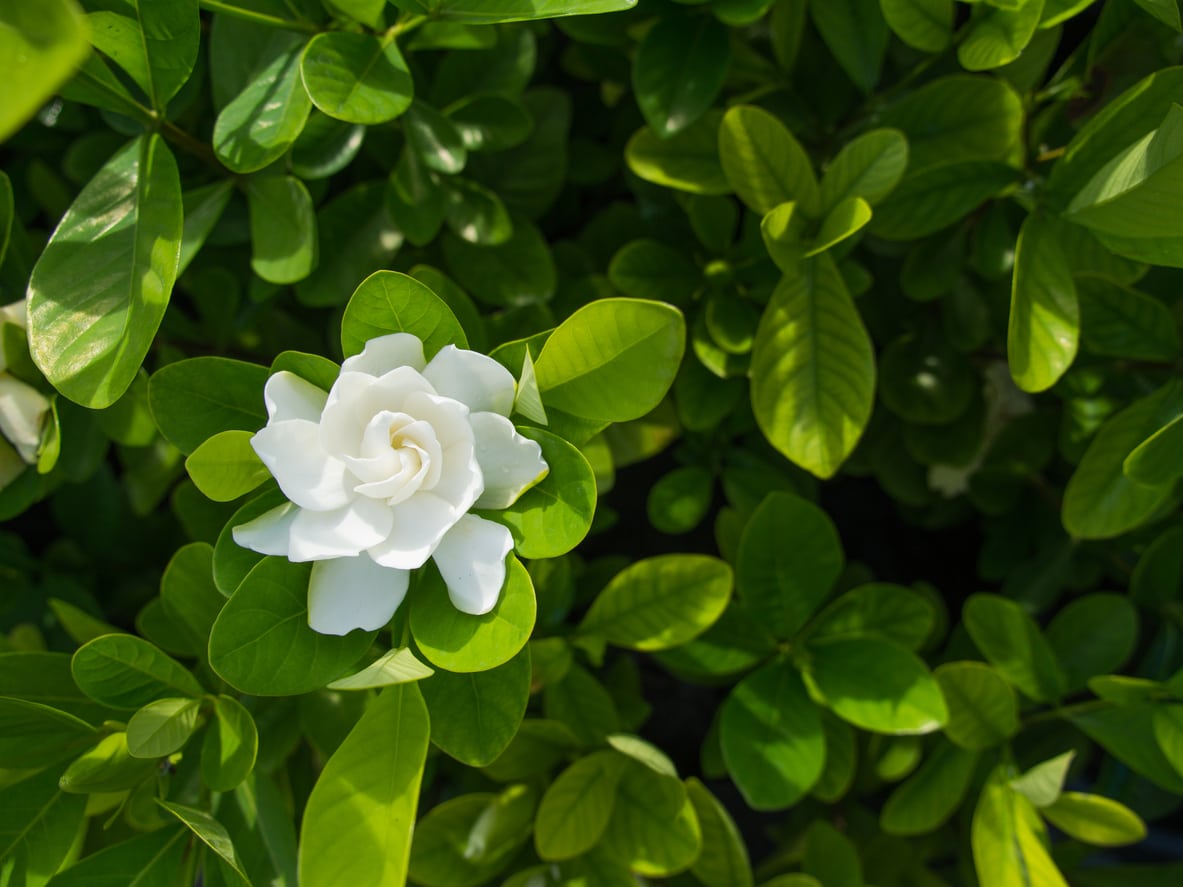Everblooming Gardenias: Growing A Grafted Everblooming Gardenia


Gardenias are known for their beauty and fragrance. An elegant specimen, the gardenia is often used as the primary flower in a corsage. Unfortunately, as with many beauties, these plants are sometimes challenging to grow. Soil and sunlight must be just right for the fickle specimen to flourish in the garden or a container. Good news, though, the grafted everblooming gardenia (Gardenia jasminoides "Veitchii") is more reliable. While it benefits from proper care, this plant is more flexible on soil and nutrient needs. Those who haven’t been successful growing gardenias might want to give this one a try.
About Everblooming Gardenias
You are probably wondering, just what is an everblooming gardenia? This plant is grafted and blooms throughout spring and summer, sometimes even into autumn. Possessing the best traits of the traditional gardenia without some of the difficulty, your dreams of beauty and fragrance in the garden are fulfilled. The plant is grafted onto a sturdy, nematode-resistant rootstock that grows well, even in poor soil. Gardenia thunbergii rootstock is better able to uptake nutrients from the soil than the traditional gardenia rootstock. The mature everblooming grafted gardenia grows to a height of 2 to 4 feet (.61 to 1.2 m.), spreading up to 3 feet (.91 m.) across. The everblooming species, also known as Gardenia veitchii, has a mounding habit and a sweet fragrance. Grow it in pots near doorways and on patios to enjoy the wonderful fragrance.
Growing Grafted Everblooming Gardenia
Hardy in USDA zones 8 through 11, plant the everblooming gardenia where it grows in full to partial sunlight. In more northern areas, grow grafted gardenia in a pot so you can provide it with winter protection from the cold. Gardeners in zone 7 may find a microclimate where this specimen can overwinter outside when mulched. With proper conditions and ongoing care, Gardenia veitchii continues indoors as a houseplant. Plant in acidic, well-draining soil for the most prolific blooms. Prepare the soil with well-rotted compost and pine fines before planting everblooming grafted gardenia. If soil is clay, compacted, or both, add additional compost, elemental sulfur and iron sulfate. A soil test of the planting area lets you know how much is needed. The optimum soil pH of between 5.0 and 6.5 is necessary for the plant to thrive. Fertilize with a food for acid-loving plants in mid-spring and again in mid-summer. This specimen also grows well in large containers that allow it to reach full growth. Water regularly, keeping the soil evenly moist. Problems with mealybugs, aphids, and powdery mildew may affect the plant. Keep a close eye out for these issues and treat with horticultural soap or neem oil, if needed.
Gardening tips, videos, info and more delivered right to your inbox!
Sign up for the Gardening Know How newsletter today and receive a free copy of our e-book "How to Grow Delicious Tomatoes".

Becca Badgett was a regular contributor to Gardening Know How for ten years. Co-author of the book How to Grow an EMERGENCY Garden, Becca specializes in succulent and cactus gardening.
-
 Looking For Plants To Give You The Soft And Fuzzies? Try These 5 Fuzzy Leaf Plant Options
Looking For Plants To Give You The Soft And Fuzzies? Try These 5 Fuzzy Leaf Plant OptionsLovers of texture, drama, silver foliage and tactile plants will adore these special sensory garden additions. These fuzzy leaf plant options will leave you all aglow
By Susan Albert
-
 Get Ready For A Summer Of Hummers! Grow These Full Sun Hummingbird Plants and Flowers
Get Ready For A Summer Of Hummers! Grow These Full Sun Hummingbird Plants and FlowersIf you’re lucky enough to enjoy a sunny backyard, make sure you are maxing out on your pollinator opportunities and grow these full sun hummingbird plants and flowers
By Tonya Barnett